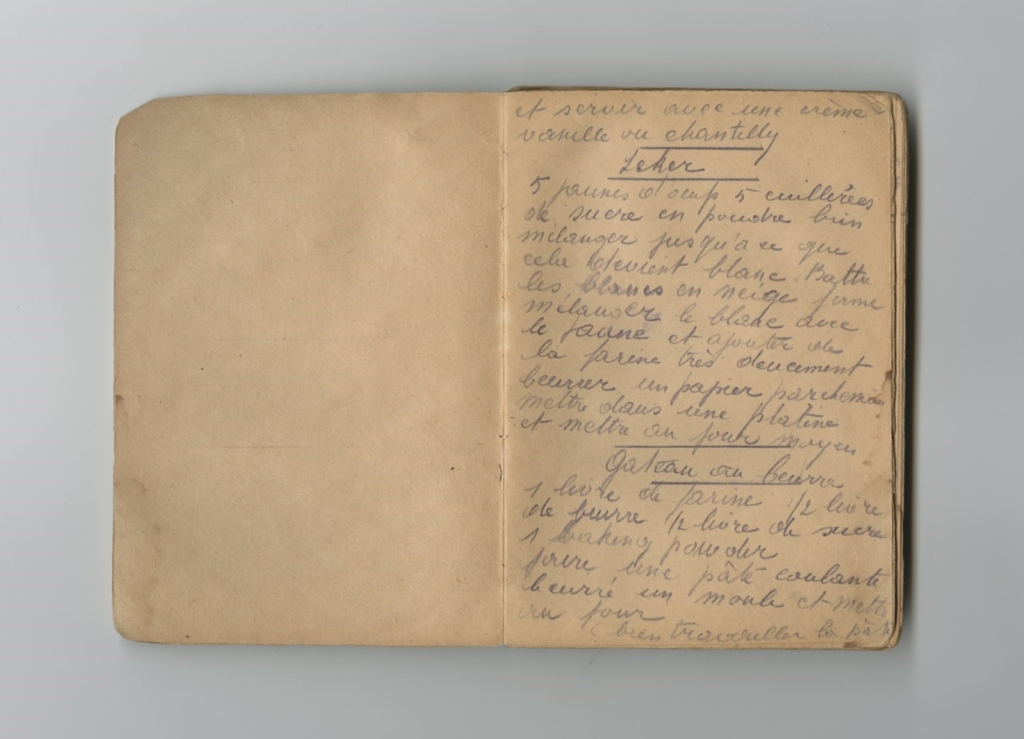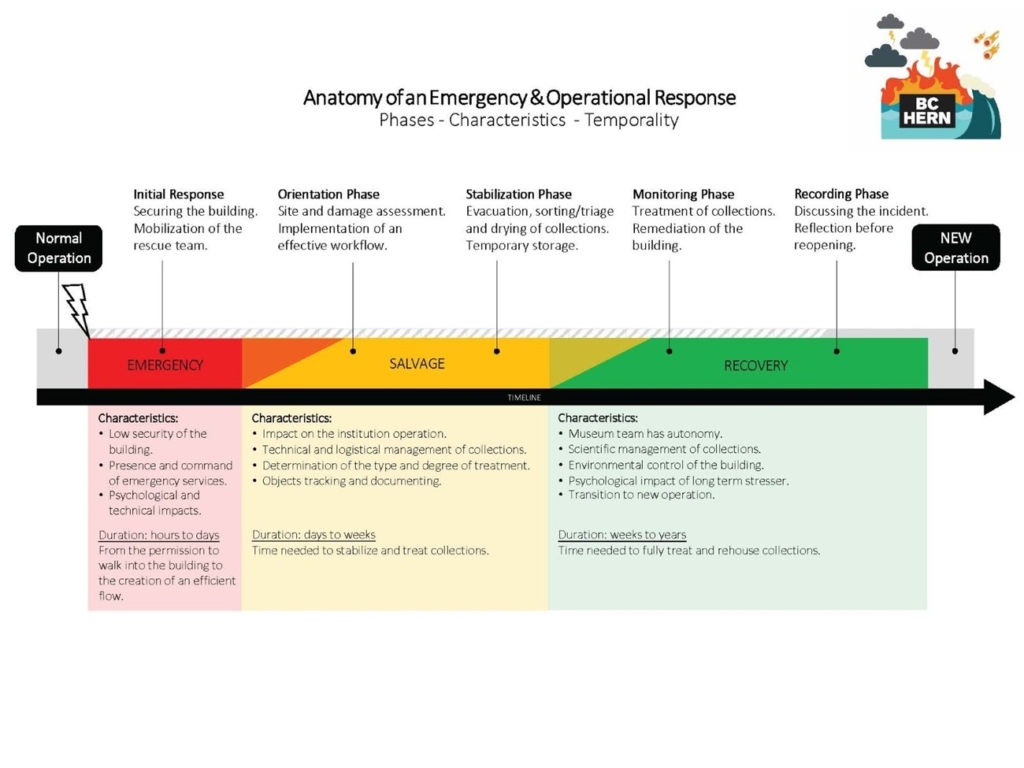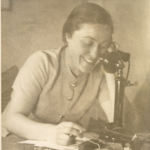Keep Calm and Archive On: How the VHEC’s Archivist Learned to Prepare for Disaster
The journey of a record or artefact from its place of creation to the VHEC vaults can be as harrowing, suspenseful, dramatic and awe-inspiring as the stories of the people they document. A fragment of a 19th century sidur from Krakow, Poland (1993.009.003) spent decades in the dilapidating library of a Polish synagogue before being acquired by 2nd generation survivor Barry Dunner in 1991. Rebecca Teitelbaum’s recipe book (99.008.001b), written and concealed in Ravensbrück and lost with a sack of belongings in the excited panic surrounding liberation, miraculously found its way back to her a few years later; Teitelbaum’s nephew and child survivor Alex Buckman donated the recipe book to the VHEC in 1999, where it is on display in our exhibition In Focus.
Once these items reach the VHEC, those needing conservation treatment are sent to a conservator, after which they are catalogued and described, placed in archival quality storage, and kept in a cool, dry, dark vault. You would think, after surviving years of war, neglect and mishandling, that an item in our collections has an easy life ahead of it.Unfortunately, as an archivist, I cannot hold such an optimistic mindset. While we do our best to make sure items are protected to the best of our abilities, Acts of God can strike at any moment: the “big one” finally hits BC, a broken pipe floods the office, or faulty electrics sparks a fire. As the climate crisis leads to dryer weather and more destructive wildfires in Canada, the threats to collections are ever increasing. Those of us who take on the task of preserving documentary heritage for generations to come must be prepared to respond to any emergency that may strike our collections.
Last November I attended a two-day Emergency Response & Salvage for Cultural Institutions workshop hosted by the British Columbia Heritage Emergency Response Network (BC HERN). BC HERN is a network of cultural heritage institutions in BC that provides training and assistance in responding to emergencies that impact collections in museums, archives, and other heritage repositories. After the devastating wildfires that destroyed much of Lytton in 2021, members of BC HERN assisted in the salvage of collections from the Lytton Museum & Archives and the Chinese History Museum, saving what they could of their priceless, one-of-a-kind artefacts.
Workshop attendees learn best practices in the salvage and recovery of collections under the guidance of leading conservators in the BC heritage field. The first day of the workshop included lectures, demonstrations, and activities on the steps needed to address and respond to an emergency that strikes collections. We learned about the different phases of an emergency and their unique characteristics, timelines and needs. It is important to first secure the area and mobilize a response team as soon as possible after the emergency strikes. This is followed by the salvage phase where the site is assessed, a salvage plan is made, and the collection is stabilized to the best of abilities.
The recovery phase is the last, and usually longest, phase, where items are conserved, permanent storage is rebuilt and what is saved from the collection is rehoused. Each phase requires specific tasks: from assessing the state of the collection and assigning tasks to team members, to tracking objects and setting up our space for storage and treatment, to moving and stabilizing items while making decisions whether to keep and treat items or discard them, and finally rehousing and returning items to a permanent location.
The second day put our new-found knowledge to the test. We were split into teams and given a “collection” of items in a cardboard box that had truly been through it all: items were burned, covered in dirt, waterlogged and in complete disarray. The collection included photographs, books, documents, textiles, wood and metal objects, even taxidermy and feather boas. As a team, we followed the emergency response steps to try to salvage our collection. We identified our team roles – who would oversee salvage, who would lead our “communications” between team members and the team and the outside world, who would monitor health and safety and who would make sure we were all staying on track.
We assessed the state of our collection, made a plan, and got to work. The logistics leaders set up our workstations while the salvage leader began removing items and bringing them to a stable location. The documentation team tagged each item and noted its salvage needs. We identified what needed to be air dried quickly (paper, textiles) versus slowly (wood). I learned the best way to salvage a soaking wet feathered animal (or a boa, in this case): a blow dryer!

Archivist Chase Nelson salvages a wet feather boa with a blow dryer.
As with any team of five strangers thrust into a stressful situation (albeit fictionalized), it took some time for us to get our bearings. People ran off with items, documentation was haphazard, and health and safety precautions were neglected (again, fictional situation, luckily). What came out of the workshop was a greater understanding of the physical and emotional requirements needed to respond to a collections-related emergency. By simulating the stress and urgency of a crisis we learn which aspects of the emergency response we are better suited to handle, and which are better assigned to someone else. We are more prepared to ask questions and devise a plan ahead of time: what risks does our organization face? Where is the nearest freezer to transport wet items to? Who is willing to be on an emergency response team? Who is going to salvage items, and who oversees snacks? This knowledge not only helps the institutions we work for, but gives us the opportunity to assist others in responding to collections-related emergencies should disaster strike.
Explore resources from BC HERN here: https://bchern.ca/salvage-tear-sheet/
Make a risk-assessment for your collections here: https://www.canada.ca/en/conservation-institute/services/risk-management-heritage-collections.html
Authored by: Chase Nelson




